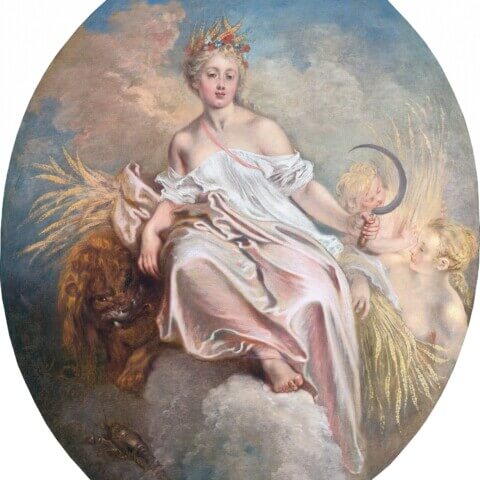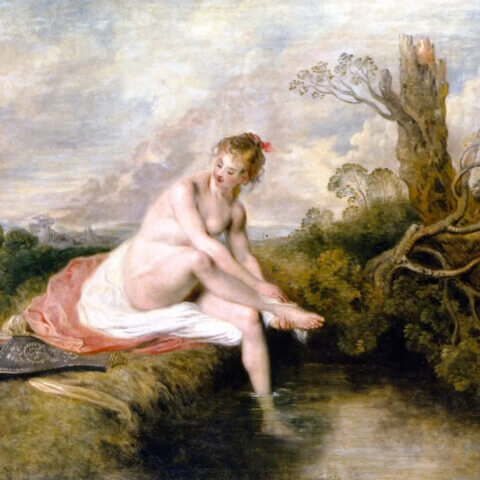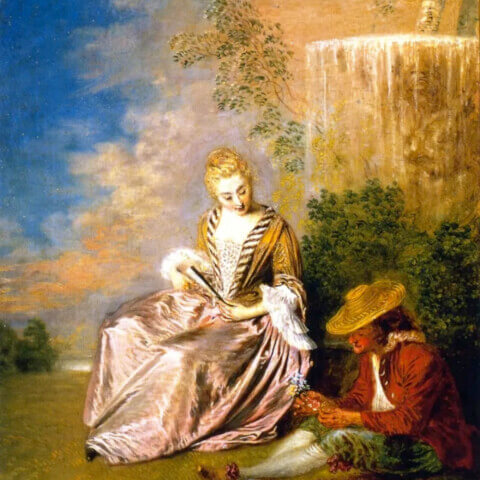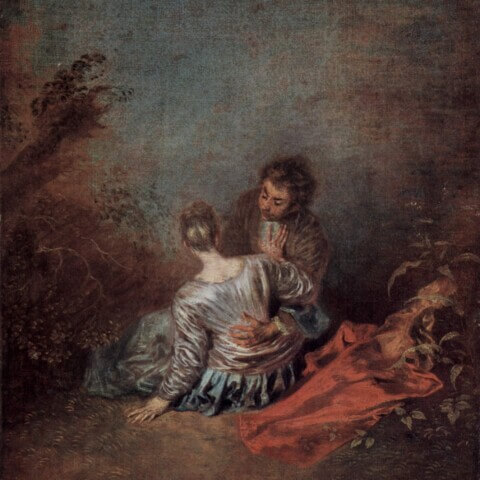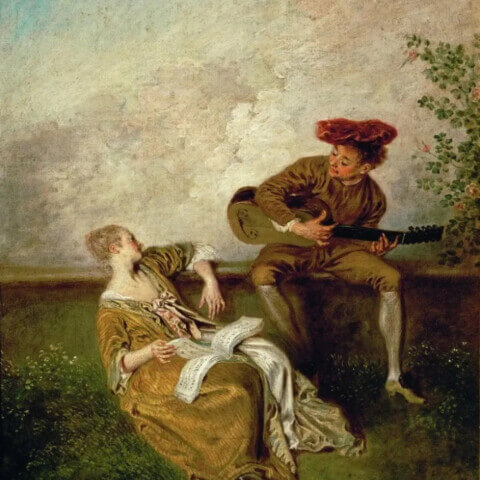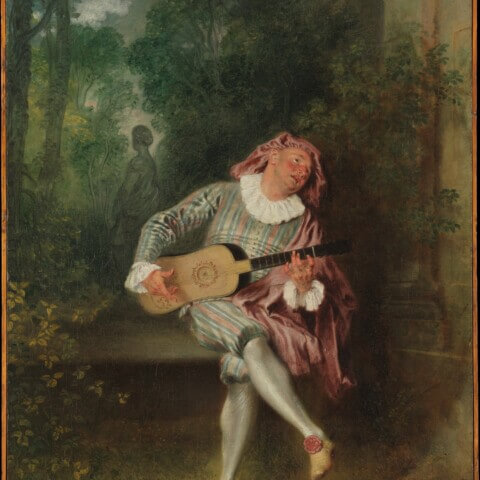Jean-Antoine Watteau
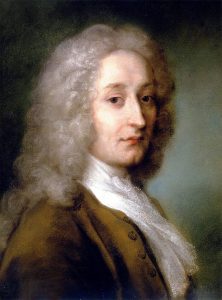
Jean-Antoine Watteau, often simply referred to as Watteau, was a renowned French painter who lived from 1684 to 1721. Known for his refined and lyrical style, Watteau stands as one of the most influential artists of the early 18th century. His work is closely associated with the Rococo movement, an art and architecture style that celebrated the carefree aristocratic life and emphasized elaborate ornamentation, asymmetry, and pastel colors.
Watteau is best known for creating a new type of genre painting, the fête galante, which featured elegantly dressed groups of people at leisure in pastoral settings. His intricate compositions and delicate brushwork imbued his paintings with a sense of dreamy idyll and subtle melancholy, while also offering intricate social commentary.
His works, such as “Pilgrimage to Cythera” and “The Embarkation for Cythera”, are often cited as the epitome of Rococo painting due to their ornate, whimsical depiction of romantic love and transient pleasures. His significant contribution to French art, despite his relatively short life, resulted in Watteau being posthumously honored as a member of the Royal Academy. Today, Watteau’s paintings continue to inspire and influence artists, and his role in shaping the Rococo aesthetic has firmly embedded his name in art history.


